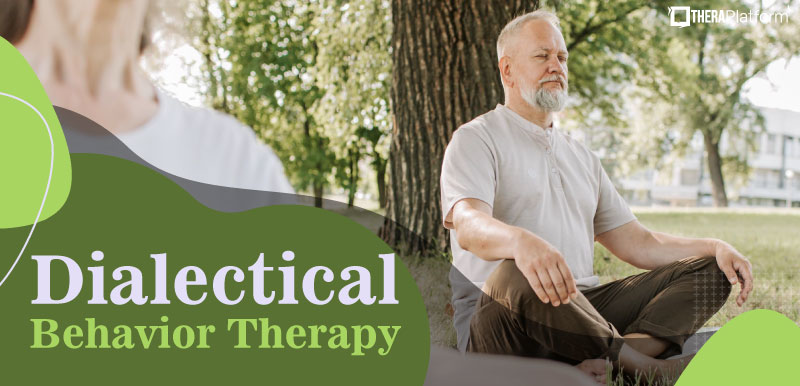Behavioral Health Types Of Therapy
Dyadic Developmental Psychotherapy

Dyadic Developmental Psychotherapy (DDP) is a treatment developed for families with children who have experienced trauma and need help attaching to and trusting others. These children often believe that adults, especially parents, aren’t safe people and cannot be looked to for help. They often resist attempts from others at emotional closeness and will act out or hide behind walls to keep others at a safe distance.
The development of DDP
Dyadic Developmental Psychotherapy has been under development by Dan Hughes and his team over the past twenty years. The approach is geared towards families who take in children who have experienced the trauma of abuse, neglect, or loss and is grounded in attachment theory and intersubjectivity.
This trauma is often compounded when these children interact with other caregivers in their family or residential treatment centers who don’t understand the complications that trauma causes and inadvertently make it more difficult for the child to heal.
Where does DDP take place?
Dyadic Developmental Psychotherapy is a multifaceted process with some work done in the therapy room with the child and family, and much of the work done in the home. The emphasis of DDP is to be an “all-encompassing approach” that improves the parenting process and facilitates the child's needs in the therapy room. The focus is on helping everyone involved understand what the child and family needs and work together for the best outcome possible.
Dyadic Developmental Psychotherapy techniques
The most important concept within DDP is that of PACE or playfulness, acceptance, curiosity, and empathy. This way of thinking is centered on the ways that infants and parents naturally connect. This helps the child progress, develop their own sense of self, and learn to trust others.
Playfulness: Having an air of playfulness doesn’t mean that things are funny all the time or that there’s no time for seriousness. However, it does mean that the environment is kept light and comfortable. For example, instead of a lecture, a parent may use storytelling.
This idea is based on how parents and infants interact naturally, learning from each other and playing without negative expectations of interactions. Playfulness can make life more fun while also allowing children to become less defensive and withdrawn and more comfortable and interactive. Additionally, playfulness can help to diffuse tense moments and moments where anger or sadness are causing interactions to be strained and negative.
Many times, troubled children don’t understand how to relax, play or have fun because they haven’t had the luxury of a developmentally appropriate childhood. People often think that emotional regulation only applies to anger or sadness, but actually, feelings like joy, excitement, and even love can cause anxiety for a dysregulated child. Living in an atmosphere of playfulness can help dispel this anxiety.
Acceptance: Those familiar with client-centered or Rogerian therapy will be well-versed in this aspect of DDP. Unconditional acceptance, similar to unconditional positive regard, does not mean that inappropriate behavior is accepted, especially harmful behavior. However, it does mean that you separate the acceptance of the child from their behavior.
The emphasis is that children are not their behavior.
The family and practitioner will work on teaching the child that they can accept how the child feels and their inner thoughts while still guiding them towards acceptable healthy ways of expressing themselves. DDP seeks to teach the child that discipline and conflict are corrections, not condemnations and that relationships and self-worth should stay intact through these corrections.
Curiosity: Acceptance, and curiosity are two sides of the same coin. By remaining curious about the child’s inner world, it is easier to show acceptance.
It’s important to emphasize here that curiosity is absolutely not the ‘Why did you do that’ statements that are often made. These questions typically come with a sense of judgment that puts cracks in the foundation of any relationship. Whether this judgment is intended by the person asking doesn’t matter as the question feels that way.
Curiosity can look like, I wonder if that was about…?’ ‘What do you think was going on?’ It may also be expressed in the form of guesses about what the child may have been feeling, not necessarily expecting a response. Think of this like having a conversation with yourself, out loud. Sharing your thought process with the child helps them learn how to have this internal conversation themself.
This development of this internal conversation helps the child learn to communicate with others and identify the reasoning behind their own behavior.
Empathy: Empathy is important to all therapy forms, but is particularly essential when developing healthy attachment. Empathy lets the child see that someone finds their feelings important and will be with them even when things are difficult.
When a child experiences the support of an empathetic adult, it helps them build confidence that they will be ok. Together, the child and the understanding adult work to allow the child to experience the range of emotions and distress but with a hand to hold through it all.
Effectiveness and potential downsides of DDP
While DDP is solidly based in theory and clinicians report favorable outcomes, large-scale empirical research still needs to be completed. There is a large multi-country study currently in progress which is awaiting data processing and the lengthy peer-review process forthcoming. However, preliminary information shows DDP to be a promising program for children who have experienced trauma.
The most recent update can be found here if you want to follow along on the progress of the DDP study.
A smaller-scale study was completed with 64 subjects, including a follow-up study of the same subjects, and it showed promise.
Of course, with a lack of substantial clinical evidence, it is crucial that clinicians considering DDP carefully monitor the progress of any children or families involved and use clinical judgment in the treatment process. However, anecdotally, treatment has appeared to be effective, and the therapy is based on sound theoretical reasoning.
Resources
For more information about how to use PACE with children in a home, school, or treatment setting, DDP has a variety of articles.
For information in the U.S. about the ongoing large-scale study, visit the Clinical Trial site.
To find DDP training in your area, search the DDP network site.
The network also offers a search on its site to find a DDP practitioner, consultant, or trainer.
Start 30-day Free Trial and explore TheraPlatform. HIPAA Compliant Video and Practice Management Software for Therapists.
Special training for the therapist
There is a wide variety of training available in DDP, ranging from parenting to practitioner-specific training. These are all offered through the DDP site, and you can use their search tool to find training near you.
To become a certified DDP practitioner, you must attend the 56-hour core training a DDPI Board-approved trainer provides.
Typically this occurs over a period of six plus months as practitioners take the 28-hour introductory course, integrate those skills into their practice, and then take the 28-hour advanced course and participate in a supervision process with an approved mentor. During this process, the practitioner can say they are using DDP-informed practices but are only allowed to advertise that they practice DDP once the entire process is completed.
DDP timeline
Initially, the therapist will need to get to know the parents. An assessment will be completed of their parenting styles and related difficulties that may arise. This is followed by teaching the parents the PACE method of parenting.
Parents and therapists will practice before inviting the child into therapy. This is also the step where parents will assess their own attachment style or disorders and work to resolve any issues that may arise or be triggered by the child’s reactions.
When the therapist sees that the parents are ready to work together in therapy, then the child is invited to join them.
The therapist will work with the child on their history and teach them how to practice better emotional regulation. As the therapist participates in this part of the process, they will model ways to talk with the child.
After the child has worked on emotion regulation, the therapist will facilitate a conversation between the parents and the child. All parties will work together in this step to allow it to run as smoothly as possible. This step may take several sessions as different themes may be explored, and communication barriers are broken.
Treatment is terminated when the attachment disorder is resolved and connection occurs without the therapist's help.
DDP can occur in person or virtually as long as parties are comfortable. If you conduct therapy virtually and want to use a virtual platform with various helpful tools and games in this process, you may want to try Theraplatform. This Web-based EMR portal offers documentation, practice management, and billing in a user-friendly and straightforward interface. They also offer a free 30-day trial with no credit card required. Cancel anytime.
More resources
- Accelerated resolution therapy
- Bibliotherapy
- Therapy resources and worksheets
- Therapy private practice courses
- Ultimate teletherapy ebook
- The Ultimate Insurance Billing Guide for Therapists
- The Ultimate Guide to Starting a Private Therapy Practice




